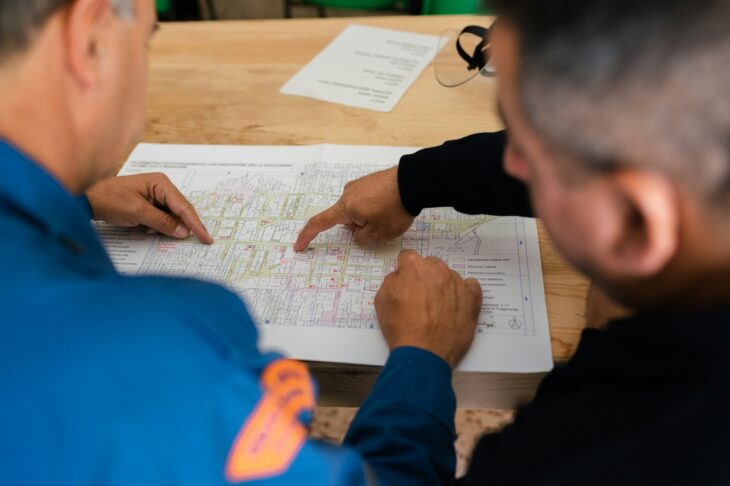
The Dynamics of Trucking: Navigating Interstate and Intrastate Routes
Trucking is a dynamic and crucial component of the transport industry, responsible for moving over 70% of the nation’s freight by weight. As global supply chains and consumer demands evolve, the trucking industry continues to adapt, employing various complexities and subtleties unique to its function. For anyone in the business, understanding the interstate versus intrastate distinctions is key to maintaining compliance and ensuring efficiency.
Each type of route presents unique challenges, from regulatory hurdles to logistical challenges, that can vastly impact a company’s operations. Mastering these distinctions ensures seamless delivery operations and regulatory compliance, crucial for businesses to thrive in a competitive marketplace.
The trucking business is not just about moving cargo from one point to another. It’s about knowing the intricate details of routes, regulations, and driver requirements. This industry is deeply embedded in the fabric of economic growth and consumer convenience, stakeholder satisfaction, and global trade connectivity.
Deciphering whether a route is interstate or intrastate plays a pivotal role in the overall strategy of trucking operations. Understanding these nuances helps companies optimize their delivery networks, reduce costs, and comply with ever-evolving industry regulations. Additionally, it allows trucking companies to anticipate operational pitfalls and leverage strategic opportunities for long-term growth and success.
Definitions of Interstate and Intrastate
While sounding similar, the terms interstate and intrastate are distinctly different and carry profound implications for trucking operations. Simply put, interstate trucking involves transportation that crosses state lines. This type of operation falls under federal jurisdiction, specifically the purview of the U.S. Department of Transportation and the Federal Motor Carrier Safety Administration (FMCSA).
As such, interstate trucking operations are subjected to a series of uniform federal regulations designed to ensure optimal safety, efficiency, and reliability across national highways. Conversely, intrastate routes remain within a single state’s borders and follow state-specific regulations.
The federal regulations governing interstate trucking ensure a consistent standard nationwide, though states may impose additional requirements that impact intrastate routes. These distinctions necessitate that trucking operators possess a deft understanding of federal and state-level laws to maintain seamless operations.
Regulatory Differences
Understanding the regulatory landscape is foundational for any trucking operation and remains one of the most critical aspects of maintaining a compliant and efficient trucking business. Interstate trucking regulations require compliance with federal law, meaning vehicles often need to meet stringent safety and equipment standards.
These standards can include specific emissions controls, weight limits, and vehicle maintenance schedules, all designed to ensure safety and reliability on national highways. Interstate trucking companies must remain vigilant about changes in federal regulations, which could affect everything from loading capacities to hours of service for drivers. In contrast, intrastate trucking is governed by state laws, which can differ dramatically from one state to another.
These rules might focus on regional priorities, such as environmental concerns or infrastructure limitations, and therefore require operators to be well-versed in the local regulatory climate to avoid penalties and fines. This nuanced complexity necessitates businesses to employ well-trained compliance officers or engage with knowledgeable consultants to remain ahead of federal and state legal requirements.
Economic Implications
Truck operators face complex economic considerations, which can vary substantially between interstate and intrastate operations. The economic landscape is influenced by broader factors such as global trade policies, fuel prices, and technological advancements, making strategic economic planning an indispensable aspect of trucking operations.
The costs associated with interstate trucking, such as tolls, fuel consumption, and vehicle maintenance, can be substantial. Companies must carefully plan routes for longer hauls to minimize these expenses while maximizing load efficiency. Conversely, intrastate trucking might incur lower fuel and maintenance costs due to shorter distances, but operators must consider other economic factors like regional delivery volume and pricing structures.
Staying informed by consulting current freight statistics allows trucking companies to make strategic economic decisions that enhance profitability. Integrating economic insights into logistical planning facilitates cost-effective operations and fortifies a company’s ability to withstand economic volatilities, thereby fostering sustainable growth.
Logistics and Routes
Efficient logistics and route planning are the backbone of competitive edge in the trucking industry, crucial for maintaining profitability amidst fierce competition. For interstate operators, advanced route planning mitigates the challenges of long distances and varying state regulations.
Companies must organize their logistics to ensure compliance at every step while optimizing delivery times and minimizing costs. Implementing state-of-the-art logistics planning tools and technologies such as GPS tracking and dynamic route optimization can significantly improve operational efficiency and customer satisfaction.
Intrastate logistics, on the other hand, focuses on maneuvering through differing urban landscapes or optimizing delivery networks within a region. Considerations such as traffic patterns, road conditions, and municipal regulations can heavily influence route planning in this context.
Both interstate and intrastate logistics require sophisticated mapping and resource allocation tools to enhance operation effectiveness and reach target markets efficiently. In an ever-evolving industry landscape, investments in logistical infrastructure and workforce training remain pivotal to maintaining an edge in service quality and operational efficiency.
Driver Requirements
Driver requirements can be one of the most variable aspects between interstate and intrastate trucking, significantly influencing hiring, training, and operational logistics. Interstate drivers typically require a Commercial Driver’s License (CDL) with various endorsements, depending on materials transported.
The spectrum of endorsements includes hazardous materials, multiple trailers, and specific vehicle types, which demands rigorous training and assessment. For materials classified as hazardous, additional certifications may be mandatory, making hiring and training procedures more rigorous.
The federal standards ensure that drivers adhere to uniform safety and operational excellence across state lines. Intrastate requirements might not demand extensive certifications but understanding the exact state guidelines remains essential for compliance.
Thoroughly vetting drivers ensures that they are well-prepared for the demands of their routes and helps maintain high safety and efficiency standards. In interstate and intrastate operations, continuous driver education and skill refinement are imperative to address evolving regulations and technological advancements, making it a significant investment worth pursuing for long-term success and operational safety.
Future Trends in Trucking
The future of trucking is ripe with innovation, promising significant advancements and changes in operational approaches that offer exciting opportunities for growth and transformation. Trends such as autonomous vehicles are set to revolutionize both interstate and intrastate logistics by enabling safer and more efficient transportation with less human intervention.
These vehicles promise substantial operational savings by reducing labor costs and optimizing fuel efficiency. Furthermore, they bring forth many legal and regulatory challenges that trucking companies must plan for proactively. Additionally, the growing emphasis on eco-friendly logistics is prompting companies to adopt alternative fuel vehicles and optimize existing routes to reduce carbon footprints.
Green logistics practices cater to rising consumer expectations for environmental responsibility and offer cost savings through reductions in fuel consumption and emissions-related costs. Trucking companies that pay attention to these trends and incorporate them into their business strategies will stay relevant and likely lead in the future’s logistics landscape, setting the stage for sustainable growth and ongoing industry transformation.

